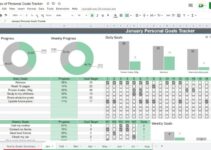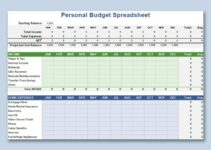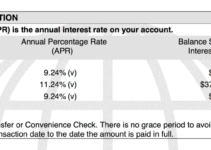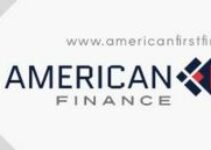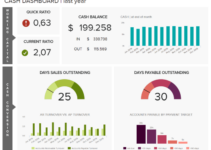Personal Finance Websites Like Mint 2024: Unlocking Financial Freedom sets the stage for this enthralling narrative, offering readers a glimpse into a story that is rich in detail and brimming with originality from the outset. Dive into the realm of personal finance management, where these websites serve as your trusted companions, empowering you to take control of your financial well-being.
Prepare to embark on a journey of financial empowerment as we explore the key features, benefits, and considerations associated with these indispensable tools. From budgeting and tracking to investment management and financial planning, we’ll delve into the intricacies of each platform, uncovering their unique strengths and guiding you towards making informed choices.
Personal Finance Websites Overview
Personal finance websites are online platforms that assist individuals in managing their financial lives. These websites provide a comprehensive suite of tools and features designed to help users track their income and expenses, create budgets, set financial goals, and make informed investment decisions.
The key benefits of using personal finance websites include:
- Improved financial awareness and control
- Reduced financial stress and anxiety
- Increased savings and wealth accumulation
- Enhanced financial decision-making
Key Features and Functionalities
Personal finance websites typically offer a range of features and functionalities, including:
- Budgeting tools:Allow users to create and track budgets, categorize expenses, and set financial goals.
- Expense tracking:Provide a platform for users to record and categorize their income and expenses, providing insights into spending patterns.
- Financial planning:Offer tools for setting financial goals, such as retirement planning, debt repayment, and investment strategies.
- Investment tracking:Allow users to track the performance of their investments, monitor market trends, and make informed investment decisions.
- Credit monitoring:Provide access to credit scores, credit reports, and alerts for potential fraud or identity theft.
- Educational resources:Offer articles, videos, and other resources to help users improve their financial literacy and make informed financial decisions.
Mint Alternatives

Mint has become a popular personal finance management tool, but there are several other options available in the market that offer different features and capabilities. These alternatives may cater to specific needs or preferences, such as advanced investment tracking, robust budgeting tools, or comprehensive financial planning assistance.
Let’s explore some of the top Mint alternatives and compare their key features to help you make an informed decision:
Budgeting and Tracking
- YNAB (You Need a Budget):Known for its envelope-based budgeting system, YNAB provides detailed expense tracking, customizable categories, and powerful reporting tools.
- EveryDollar:Based on Dave Ramsey’s zero-based budgeting principles, EveryDollar offers simple and effective budgeting with clear visual representations.
- Goodbudget:Utilizes the envelope method with a focus on shared budgeting for couples or families, allowing for collaboration and accountability.
Investment Management
- Personal Capital:Provides comprehensive investment tracking, retirement planning tools, and personalized financial advice from certified advisors.
- Wealthfront:Offers automated investment management, tax-loss harvesting, and personalized portfolio recommendations based on your risk tolerance and financial goals.
- Betterment:Known for its low-cost robo-advisor services, Betterment provides diversified portfolios and automatic rebalancing to help you stay on track.
Financial Planning
- Vanguard Personal Advisor Services:Offers personalized financial planning and investment management from Vanguard, a reputable investment company.
- Schwab Intelligent Portfolios:Provides automated portfolio management with access to financial advisors for guidance and support.
- Fidelity Investments:Offers a wide range of financial planning services, including retirement planning, estate planning, and investment advice.
User Experience and Interface

Personal finance websites prioritize user experience and interface to enhance accessibility and engagement. These websites strive to create intuitive navigation, customizable dashboards, and user-friendly features.
The ease of use is paramount, with clear and concise menus, simple navigation, and minimal clutter. Customization options empower users to tailor their experience by setting personalized budgets, tracking specific goals, and adjusting the display of financial data.
Navigation, Personal Finance Websites Like Mint 2024
Navigation is streamlined and intuitive, enabling users to quickly access desired sections and features. Clear labeling and organized menus guide users through the website, facilitating seamless transitions between pages.
Customizable Dashboards
Customizable dashboards provide users with a personalized overview of their financial situation. They can add or remove widgets, rearrange modules, and adjust the display to suit their preferences. This flexibility empowers users to create a dashboard that aligns with their unique financial needs.
Mobile Accessibility
Recognizing the importance of mobile access, personal finance websites offer optimized mobile apps or responsive designs. These mobile-friendly platforms provide users with on-the-go access to their financial information, allowing them to manage their finances anytime, anywhere.
Security and Data Privacy
Protecting user information and ensuring the safety of financial data are paramount for personal finance websites. These platforms implement robust security measures and adhere to strict data privacy policies to safeguard user information from unauthorized access, breaches, and fraudulent activities.
Data encryption, multi-factor authentication, and regular security audits are commonly employed to protect user data. Websites also comply with industry standards and regulations, such as the Gramm-Leach-Bliley Act (GLBA), to ensure the confidentiality, integrity, and availability of user information.
Data Encryption
- Personal finance websites use encryption technologies to protect data in transit and at rest. Encryption algorithms, such as AES-256, render user information unreadable to unauthorized individuals, even if intercepted.
- Data is encrypted both during transmission over the internet and when stored on servers, ensuring its confidentiality and integrity.
Multi-Factor Authentication
- Multi-factor authentication (MFA) adds an extra layer of security by requiring users to provide multiple forms of identification when logging in.
- This typically involves a combination of a password, a one-time code sent via SMS or email, and/or a biometric identifier, such as a fingerprint or facial recognition.
- MFA significantly reduces the risk of unauthorized account access, even if a user’s password is compromised.
Regular Security Audits
- Personal finance websites undergo regular security audits conducted by independent third parties to identify and address potential vulnerabilities.
- These audits assess the effectiveness of security measures, including encryption, authentication protocols, and data storage practices.
- Audits help ensure that the website remains secure and compliant with industry standards.
Integrations and Partnerships
Personal finance websites like Mint offer integrations with other financial institutions, budgeting apps, and investment platforms to enhance user experience and provide a comprehensive view of your financial situation.
Connecting your accounts with these third-party services allows you to track your transactions, budgets, and investments in one central location. This can save time and effort, as you no longer need to manually enter data or switch between multiple apps.
Benefits of Integrations
- Automated Data Synchronization:Integrations eliminate the need for manual data entry, ensuring accuracy and reducing the risk of errors.
- Consolidated View of Finances:Connect accounts from different financial institutions to gain a comprehensive overview of your financial health.
- Improved Budgeting and Forecasting:Integrate budgeting apps to track expenses, set goals, and forecast future cash flow.
- Investment Tracking and Analysis:Connect investment platforms to monitor performance, analyze trends, and make informed decisions.
Types of Integrations
- Financial Institutions:Link bank accounts, credit cards, and investment accounts to track transactions, balances, and account activity.
- Budgeting Apps:Integrate popular budgeting apps like YNAB, EveryDollar, and PocketGuard to manage expenses, create budgets, and track progress.
- Investment Platforms:Connect with investment platforms like Vanguard, Fidelity, and Betterment to track investments, monitor performance, and make trades.
Pricing and Value Proposition
Personal finance websites offer a range of pricing plans, each with its own features and benefits. The cost of different plans varies depending on the website and the level of service provided.
Some websites offer a free plan that includes basic features such as budgeting, tracking expenses, and setting financial goals. Other websites offer premium plans that include additional features such as investment tracking, credit monitoring, and personalized financial advice.
Cost of Different Plans
The cost of different plans varies depending on the website and the level of service provided. Some websites offer a free plan, while others charge a monthly or annual fee. The following table compares the cost of different plans from some of the most popular personal finance websites:
| Website | Free Plan | Premium Plan |
|---|---|---|
| Mint | Yes | $12/month or $120/year |
| Personal Capital | Yes | $299/year |
| YNAB | 34-day free trial | $14.99/month or $98.99/year |
| EveryDollar | Yes | $12.99/month or $79/year |
Features and Benefits of Different Plans
The features and benefits of different plans vary depending on the website and the level of service provided. Some plans include basic features such as budgeting, tracking expenses, and setting financial goals. Other plans include additional features such as investment tracking, credit monitoring, and personalized financial advice.
When choosing a personal finance website, it is important to compare the cost of different plans and the features and benefits included in each tier. It is also important to consider your own financial needs and goals when making a decision.
Customer Support and Resources
In addition to their core financial management features, personal finance websites like Mint offer varying levels of customer support and resources to assist users in managing their finances.
Access to reliable and responsive customer support is crucial for resolving any issues or queries that users may encounter while using the platform. These websites typically provide a combination of live chat, email support, FAQs, and educational materials to ensure that users have the resources they need to succeed.
Live Chat Support
Live chat support provides users with the ability to connect with a customer support representative in real-time. This is a convenient and efficient way to get immediate assistance with any urgent questions or technical difficulties. Mint offers live chat support during specific business hours, allowing users to receive prompt responses to their inquiries.
Email Support
Email support is another common form of customer support offered by personal finance websites. Users can submit their questions or concerns via email and typically receive a response within 24-48 hours. This option is suitable for non-urgent inquiries or detailed questions that require a more comprehensive response.
FAQs and Educational Materials
FAQs (Frequently Asked Questions) sections provide users with quick and easy access to answers to common questions. These sections are often organized by topic, making it easy for users to find the information they need. Additionally, many personal finance websites offer educational materials such as articles, webinars, and videos to help users improve their financial literacy and make informed decisions.
Industry Trends and Innovations
The personal finance website industry is constantly evolving, driven by technological advancements and changing consumer needs. Let’s explore the latest trends and innovations shaping the future of financial management.
Artificial intelligence (AI) and machine learning (ML) are transforming the industry by automating tasks, providing personalized insights, and enhancing user experience. AI-powered chatbots and virtual assistants are becoming increasingly common, offering real-time support and guidance.
Data Aggregation and Open Banking
Data aggregation and open banking are gaining traction, allowing users to connect all their financial accounts in one place. This provides a comprehensive view of their financial situation, enabling better decision-making and financial planning.
Financial Wellness and Gamification
Personal finance websites are focusing on promoting financial wellness by offering tools and resources to help users improve their financial habits. Gamification techniques, such as rewards and challenges, are being used to make financial management more engaging and motivating.
Investment Automation and Robo-Advisors
Investment automation and robo-advisors are making investing more accessible and affordable. These platforms use algorithms to manage portfolios based on individual risk tolerance and financial goals, providing a low-cost alternative to traditional financial advisors.
Security and Fraud Prevention
Security and fraud prevention remain top priorities for personal finance websites. Advanced encryption technologies, multi-factor authentication, and fraud detection systems are being implemented to protect user data and prevent unauthorized access.
Best Practices for Choosing a Personal Finance Website
Choosing the right personal finance website can make a significant difference in your financial journey. Here are some key factors to consider:
Features:Identify the specific features you need, such as budgeting tools, investment tracking, credit monitoring, and tax optimization. Ensure the website offers these features.
Security and Privacy
- Verify the website’s security measures, including encryption and two-factor authentication.
- Review the privacy policy to understand how your data will be used and protected.
User Experience
- Choose a website with an intuitive interface that is easy to navigate.
- Consider the website’s mobile app for on-the-go access.
Customer Support
- Ensure the website offers reliable customer support through multiple channels, such as email, phone, and live chat.
- Check the website’s response times and customer satisfaction ratings.
Last Word
As we conclude our exploration of Personal Finance Websites Like Mint 2024, it’s evident that these platforms hold immense potential to revolutionize the way we manage our finances. By embracing their capabilities and leveraging their user-friendly interfaces, we can unlock the path to financial freedom, making informed decisions, and achieving our long-term financial goals.
Remember, the key to financial success lies in taking control, and these websites provide the tools and guidance to empower you every step of the way.
Common Queries: Personal Finance Websites Like Mint 2024
What are the key benefits of using personal finance websites?
Personal finance websites offer a comprehensive suite of features designed to simplify and streamline financial management. They provide real-time tracking of income and expenses, enabling users to identify areas for improvement and make informed budgeting decisions.
How do I choose the best personal finance website for my needs?
Consider your specific financial goals and preferences when selecting a personal finance website. Evaluate the features offered by different platforms, including budgeting tools, investment tracking capabilities, and user-friendly interfaces. Read reviews and compare pricing models to find the website that best aligns with your requirements.
Are personal finance websites secure?
Reputable personal finance websites employ robust security measures to protect user data. They typically utilize encryption technologies, multi-factor authentication, and industry-standard protocols to safeguard sensitive financial information.

